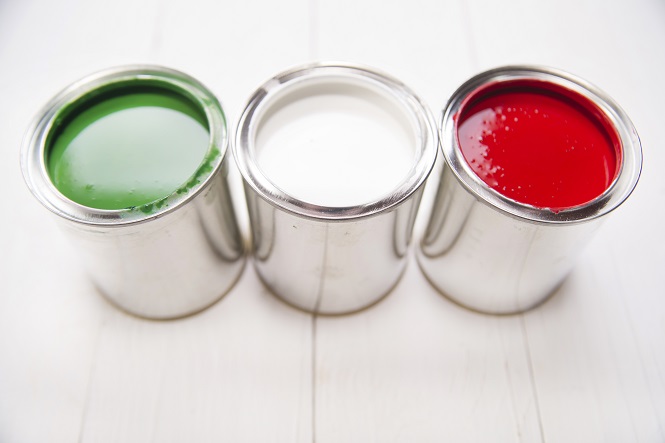 Lead used to be found in all kinds of household items: pencils, water pipes, paint, gasoline, drinking glass and more. But as people learned how dangerous it was, lead quickly stopped appearing in almost all of these things.
Lead used to be found in all kinds of household items: pencils, water pipes, paint, gasoline, drinking glass and more. But as people learned how dangerous it was, lead quickly stopped appearing in almost all of these things. Lead is still found in a couple of modern products, most notably batteries and ammunition. If you own an older home, you may need to worry about lead pipes or lead paint during a remodel. We share several resources for safely recycling lead-based products in your home.
What is lead?
Lead is a naturally occurring substance that occupies number 82 on the periodic table of elements. It is a shiny, malleable metal that has many beneficial characteristics. Since it is so soft, it can easily be shaped into useful products. Lead will not corrode, which explains why it was used in water pipes. Manufacturers put it in paint because it made it shiny, attractive and easy to clean.The problem is that lead is also highly toxic, especially when inhaled or ingested by children. The Mayo Clinic outlines several symptoms of lead poisoning in kids, including developmental delays, problems learning, weight loss, hearing loss and sluggishness. In adults, lead poisoning causes high blood pressure, joint and muscle pain, poor mental function and memory problems.
Lead gets recycled like all other metals: It is melted at a very high temperature and turned into other products. Most of the lead in use today ends up getting recycled. The International Lead Association shares that over half the products made with lead contain recycled materials. In some countries, the organization contends, the lead recycling rate is close to 100 percent.
How to recycle lead
If you have metal items made of lead, such as water pipes, you may be able to take them to your local metal recycling company. In my hometown of Eugene, Oregon, Schnitzer Steel will purchase it from people. However, the representative I spoke with noted that lead is still considered a specialized product because it can’t just be left lying around on the ground. As a result, not all metal recycling companies will accept it. Before you try taking lead products to your local metal recycler, call ahead and see if they are interested in it.If they are not, ask them or your city or county solid waste management agency if they have suggestions about where to take it. If you are working with a contractor or plumber on a home renovation, they may also have suggestions about where to take unwanted lead products.
How to recycle lead-based paint
If you live in a house that has lead-based paint, or plan to refurnish furniture coated in lead-based paint, do not remove it. The lead in the paint is stable until it is sanded, cut or otherwise disturbed. At that point, it will become airborne and can be inhaled (or ingested if it falls on food or utensils).If you need to have the paint removed, call a certified technician to do the work. The EPA has a list of certified professionals on their website.
If you have lead-based paint chips that have fallen off the wall or a piece of furniture, those paint chips must be treated as household hazardous waste (HHW). Every county should have an option for disposing of HHW, although their opening times and locations vary greatly from place to place. In some communities, household hazardous waste facilities are co-located with recycling centers or waste transfer stations and are open every day. In other places, you will need to wait for a HHW special collection event. Counties that utilize these services often have mobile HHW collection units that move around to various places in the community.
In the unlikely event you run across cans of lead-based paint in a basement or garage (the product has not been manufactured since the 1970s), you will need to dispose of it carefully.
The method for recycling all types of paint depends on where you live. Eight states, including Colorado and Rhode Island, have adopted PaintCare’s recycling standards. PaintCare is a product stewardship program managed in partnership with the paint industry. In PaintCare states, most retailers that sell paint also collect old paint at no charge.
In states that have not adopted PaintCare’s standards, you will need to take the paint to your local HHW center.
How to recycle lead-acid batteries
Cars, boats and other vehicles contain lead-acid batteries. So do the back-up generators at many hospitals, prisons and institutions. Lead-acid batteries are considered extremely hazardous and are banned from landfills in all 50 states.There are a couple of options for recycling lead-acid batteries. Stores that sell lead-acid batteries, such as O’Reillys Auto Parts, Napa Auto Parts and Autozone , should take your old one when you purchase a new one. Many Batteries Plus stores also accept them.
Your local HHW facility will also accept lead-acid batteries for recycling.
How to recycle lead ammunition
It is important to handle ammunition with care under any circumstances. It can, after all, cause a deadly explosion. Add in the fact that ammunition contains lead and it becomes even more important to deal with it in a responsible manner.This article from Lucky Gunner Lounge does a great job of examining ammunition recycling options. It recommends checking with local law enforcement agencies, shooting ranges and HHW facilities to see if they can take unwanted ammunition.